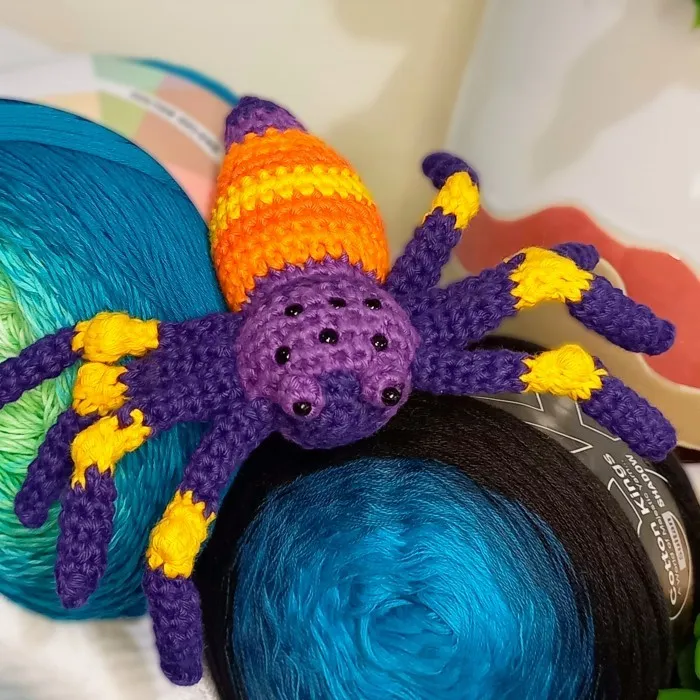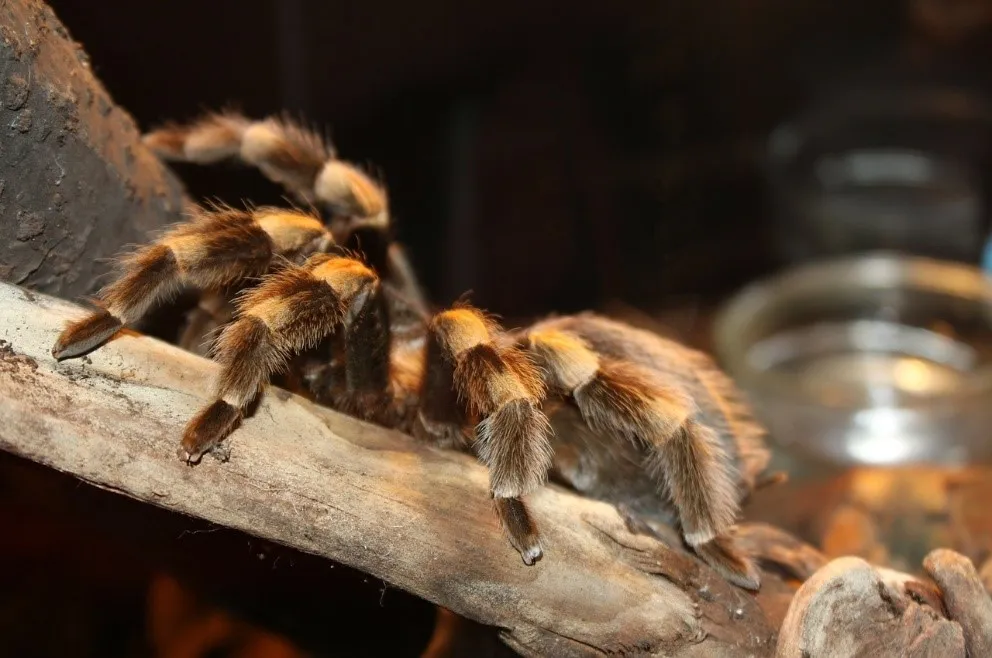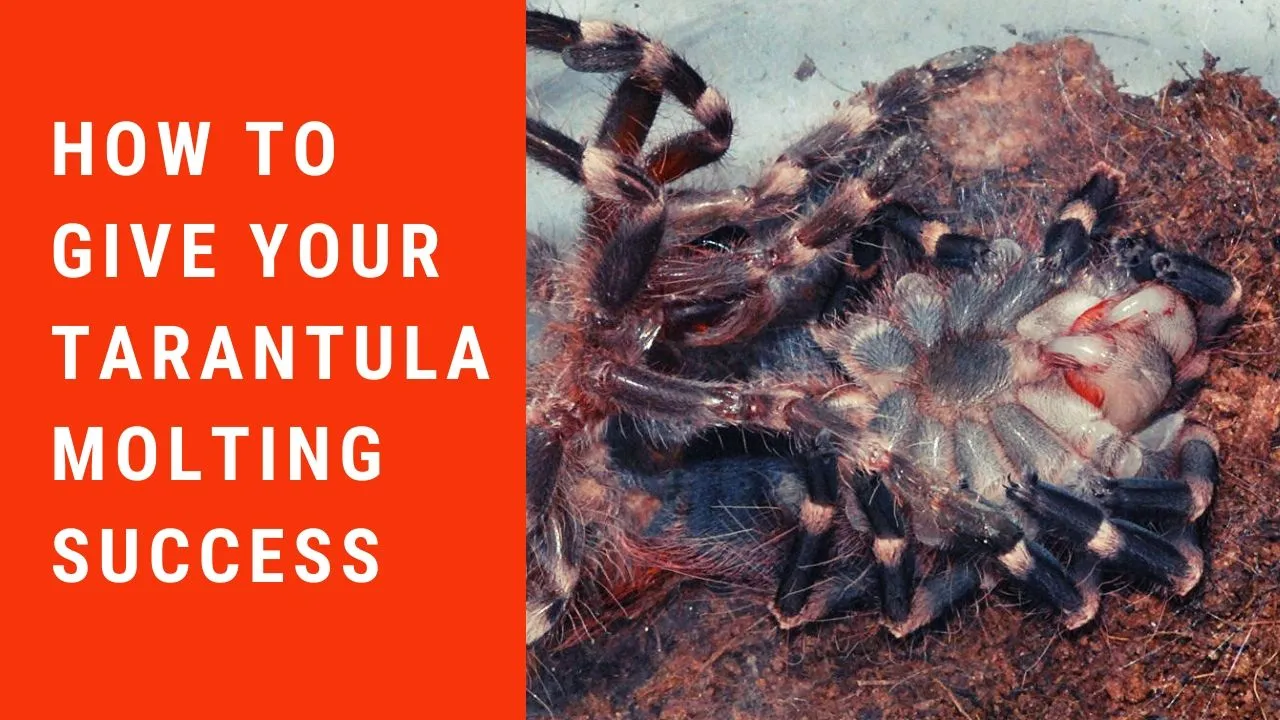Understanding Tarantula Happiness
Keeping a tarantula happy involves understanding its needs and providing an environment that mimics its natural habitat. Unlike more interactive pets, tarantulas express happiness through subtle cues and behaviors. Recognizing these signs is crucial for ensuring your eight-legged friend thrives. This involves providing a safe, comfortable, and enriching environment where the tarantula can exhibit its natural behaviors. A happy tarantula is a healthy tarantula, and by paying attention to its needs, you can ensure a long and fulfilling life for your pet. Understanding their behavior will allow you to provide them a perfect habitat and diet.
Signs of a Happy Tarantula
Active and Alert Behavior

A happy tarantula will be active and alert, exploring its enclosure and displaying normal movement patterns. This includes walking around, occasionally digging, and showing interest in its surroundings. A tarantula that spends all its time in one spot, hiding away, may be stressed or uncomfortable. Observing your tarantula’s activity levels is a simple yet effective way to gauge its well-being. Note when your tarantula is most active, as some species are nocturnal. If the tarantula is frequently active during its normal period and exploring its habitat, chances are your tarantula is doing well and happy.
Healthy Appetite and Feeding
A healthy appetite is a key indicator of a happy tarantula. A tarantula that readily accepts food, such as crickets or mealworms, is likely content. Refusal to eat, or loss of appetite, can be a sign of stress, illness, or improper environmental conditions. Monitor how often your tarantula eats and the amount of food it consumes. Adjust feeding frequency based on the tarantula’s size, age, and species, as younger tarantulas and those undergoing molting may eat more or less frequently. Make sure to remove any uneaten food within a reasonable time to prevent mold and mites growth.
Proper Molting Process
Molting is a natural process where tarantulas shed their exoskeletons to grow. A happy tarantula will molt successfully, with minimal difficulty. Signs of a healthy molt include the tarantula preparing for the process by creating a webbing mat and then shedding the entire exoskeleton in one piece. Ensure the enclosure has adequate humidity during molting and avoid disturbing the tarantula during this vulnerable time. If a tarantula struggles to molt or shows signs of distress, it could indicate environmental issues or underlying health problems. Observing the molt process and ensuring the correct humidity levels is important.
Essential Habitat Setup

Creating the right habitat is fundamental to tarantula happiness. The enclosure should mimic the tarantula’s natural environment, providing a safe and comfortable space. This involves selecting the right size and material for the enclosure, providing appropriate substrate and decorations, and maintaining the correct temperature and humidity levels. Correct habitat setup reduces stress and supports the tarantula’s overall health and well-being. A properly designed habitat creates a secure environment where your tarantula can thrive and exhibit its natural behaviors. Setting up their home correctly allows you to enjoy watching your spider.
Choosing the Right Enclosure
The enclosure is your tarantula’s home, so its size and material are critical. Choose an enclosure that’s appropriately sized for the tarantula’s species and size. As a general rule, the enclosure should be at least twice as wide as the tarantula’s leg span. Glass or acrylic enclosures are popular choices, as they provide good visibility and are easy to clean. Avoid enclosures with large openings or gaps that the tarantula could escape from. Ensure the enclosure is well-ventilated to prevent excessive humidity and mold growth, which can be harmful to the tarantula. Keep the enclosures clean and avoid areas with lots of sunlight, as too much light can stress the tarantula.
Size and Material Considerations
The size of the enclosure must be appropriate for the size of the tarantula, allowing enough space for movement and exploration. A small enclosure can lead to stress, while one that is too large can make it difficult for the tarantula to find food. The material of the enclosure should be durable and non-toxic, with good visibility. Glass and acrylic enclosures offer excellent visibility, making it easy to observe your tarantula. Avoid materials that can be easily damaged or that might release harmful chemicals. Consider enclosures that have secure lids and are easy to clean, helping to maintain a healthy environment. Proper consideration of size and material is crucial for your tarantula’s comfort and safety.
Substrate and Decoration

Substrate and decorations create a natural environment that encourages your tarantula’s well-being. The substrate should be appropriate for the species. Common choices include coconut fiber, peat moss, and vermiculite, which help retain humidity and allow the tarantula to burrow. Decorations such as cork bark, fake plants, and rocks provide hiding places and enrich the environment. These elements are crucial for the tarantula’s mental and physical health. Be careful when choosing decorations, and always avoid anything with sharp edges that could injure your tarantula. The right substrate and decorations will help keep your tarantula happy and healthy.
Providing the Right Humidity and Temperature
Maintaining the correct humidity and temperature is vital for tarantula health. Different species have different needs, so research your specific tarantula’s requirements. Most tarantulas thrive in a humidity range of 60-80%, which can be maintained by misting the enclosure regularly. Use a hygrometer to monitor humidity levels. Temperature should be maintained within a specific range, typically between 75-85°F (24-29°C). Use a thermometer to monitor the temperature, and use a heat source if needed. Fluctuations in temperature and humidity can stress the tarantula. Proper temperature and humidity help the tarantula molt and ensures that they will live a long and happy life.
Temperature Control Techniques
To control temperature, use a heat mat or ceramic heat emitter, placed on the side of the enclosure. Avoid placing heat sources directly under the enclosure, as this can overheat the substrate. Monitor the temperature regularly with a thermometer to ensure it stays within the recommended range. Ensure that the heat source does not come into direct contact with the tarantula to prevent burns. Proper temperature control helps regulate the tarantula’s metabolism and supports its overall health. Maintain the temperature with a reliable thermostat to prevent any sudden changes.
Humidity Management Strategies

Humidity levels can be managed by misting the enclosure with water, typically once or twice a week, depending on the species and environmental conditions. Avoid over-misting, as this can lead to mold growth. Ventilation is also essential for maintaining proper humidity levels. Ensure that the enclosure has adequate ventilation to prevent excessive moisture buildup. The type of substrate used will also affect humidity levels; some substrates retain moisture better than others. Consider using a hygrometer to monitor humidity levels and make necessary adjustments. Monitoring the humidity levels ensures a safe and comfortable environment.
Nutrition and Feeding Your Tarantula
Proper nutrition is crucial for a happy and healthy tarantula. Feeding the right food in the right quantities is essential. The diet should consist primarily of live insects, such as crickets, mealworms, and roaches. Ensure the food is appropriately sized for your tarantula and is not treated with pesticides. The frequency of feeding depends on the tarantula’s age and species, with juveniles requiring more frequent meals. Supplements and hydration are also essential for maintaining good health. The right diet will ensure that your tarantula receives all necessary nutrients.
Choosing Appropriate Food
Select live insects appropriate for the tarantula’s size. Crickets, mealworms, and roaches are common choices. Ensure the insects are gut-loaded with nutritious food before feeding them to your tarantula. Avoid feeding wild-caught insects, which may carry parasites or pesticides. Vary the diet to provide a range of nutrients. The size of the prey should be appropriate for the tarantula’s size, with the prey being no larger than the tarantula’s abdomen. Remove any uneaten food within 24 hours to prevent mold or mite growth. The correct food choice is key to a healthy and happy tarantula.
Frequency and Portion Control

The feeding frequency depends on the tarantula’s age and species. Juveniles require more frequent meals, typically every 1-2 days, while adults can be fed every 1-2 weeks. Adjust the portion size based on the tarantula’s appetite and body condition. Overfeeding can lead to obesity and health problems. Monitor the tarantula’s abdomen size; it should be slightly rounded, not excessively large. Offer only a few insects at a time. Once the tarantula is no longer interested, remove any remaining food to prevent stress or issues with hygiene.
Supplements and Hydration
While insects provide most of the necessary nutrients, occasional supplements can benefit tarantulas. Calcium and vitamin supplements can be dusted on the insects. Always provide fresh, clean water for hydration. Use a shallow water dish or provide a water source through the substrate. Ensure the water dish is shallow enough to prevent drowning. Regular hydration helps the tarantula with molting and overall well-being. The right supplements and hydration keeps the tarantula happy and healthy.
Handling and Interaction
Tarantulas are generally not meant to be handled frequently, and excessive handling can cause stress. If handling is necessary, do so with caution and respect. Learn the signs of a stressed tarantula and avoid handling when the tarantula is not receptive. Always prioritize the tarantula’s comfort and safety. Observe the tarantula’s behavior. If they are skittish or appear stressed, refrain from handling. Handling should be minimized, as it’s not always necessary for their well-being.
When to Handle

Limit handling to situations where it’s absolutely necessary, such as when cleaning the enclosure or relocating the tarantula. Handle the tarantula only when it’s calm and receptive. Never handle a tarantula after a molt, as their new exoskeleton is soft and vulnerable. Avoid handling during feeding or if the tarantula displays aggressive behavior. Always be aware of the tarantula’s posture and body language. Never try to force the tarantula. If the tarantula is not comfortable, it can lead to stress and potential injury to both you and the tarantula.
Proper Handling Techniques
If you need to handle your tarantula, use gentle and slow movements. Approach the tarantula from the side, not from above, to avoid startling it. Gently encourage the tarantula to walk onto your hand. Avoid sudden movements or loud noises. Hold the tarantula close to the ground, in case it falls. Be prepared for the tarantula to move unexpectedly. Never squeeze or restrain the tarantula. Always wash your hands before and after handling, and avoid using scented soaps or lotions.
Avoiding Stress
Minimize stress by avoiding sudden movements, loud noises, and unnecessary handling. Provide a secure and stable enclosure with hiding places. Be aware of the tarantula’s behavior and body language, and respect its space. A stressed tarantula may display defensive postures, such as raising its front legs or flicking hairs. If the tarantula shows signs of stress, allow it to retreat to its hiding place and leave it undisturbed. A calm and stress-free environment is essential for the tarantula’s well-being. Reducing stress leads to a happier and healthier tarantula.
Creating a Stress-Free Environment
Creating a stress-free environment involves minimizing disturbances, providing suitable hiding places, and maintaining a clean and stable enclosure. Ensure the enclosure is located in a quiet area, away from loud noises and vibrations. Proper maintenance and a well-planned habitat are essential for your tarantula’s happiness and overall health. A calm environment helps the tarantula feel safe and secure. The tarantula will be happier with a safe place to retreat to.
Minimizing Disturbances
Place the enclosure in a quiet, low-traffic area, away from direct sunlight and drafts. Avoid sudden movements or loud noises near the enclosure. Cover the enclosure with a cloth or hide to provide privacy. Regularly monitor the environment for any potential disturbances. Minimize interactions to times when the tarantula is being fed. Providing a calm environment helps the tarantula feel safe and secure. Regularly checking the enclosure to ensure a lack of disturbances will benefit the tarantula.
Providing Hiding Places
Provide hiding places where the tarantula can retreat and feel safe. Cork bark, artificial plants, and other decorations can serve as hiding spots. Ensure the hiding place is large enough for the tarantula to comfortably fit inside. Offering various options will ensure the tarantula has choices based on how it feels. A secure hiding place provides a sense of security, reducing stress and encouraging natural behaviors. The right hiding spot helps the tarantula feel safe and secure.
Regular Tank Maintenance
Regular tank maintenance keeps the enclosure clean and healthy. Remove uneaten food, shed exoskeletons, and any other waste promptly. Spot-clean the enclosure regularly, and fully clean and replace the substrate every few months. Always wear gloves when handling the enclosure. Cleaning the tank helps maintain a hygienic environment and prevents the buildup of bacteria, mold, and mites. The right maintenance helps the tarantula feel safer and thrive.
Recognizing and Addressing Common Issues
Knowing how to recognize and address common issues is essential for ensuring your tarantula’s well-being. This involves monitoring the tarantula’s behavior, appetite, and overall appearance. Being proactive in addressing health problems and environmental issues is key to the tarantula’s long-term health. Addressing potential problems before they become serious can often improve the tarantula’s quality of life. Regular monitoring helps to recognize and fix problems that can affect the tarantula.
